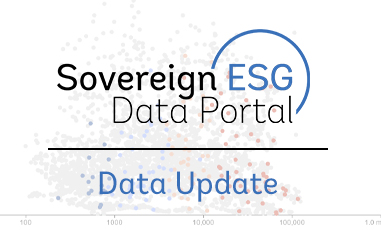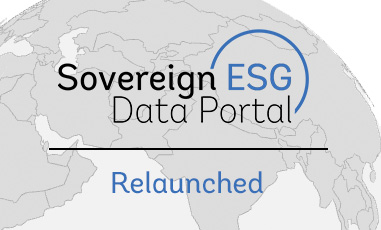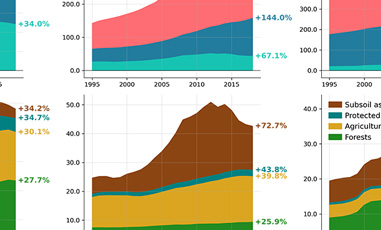Data Update: The Sovereign ESG Data Portal has been updated with the latest data in the ESG landscape. This release includes the annual economy classification update and extends many existing datasets through 2024. We are continuously refining the Portal's usability, empowering users to conduct their own comprehensive analyses. Curious about the details? Read on to discover what’s new in this data story.
Annual economy classification updates
Each year, the World Bank Group updates its income classifications for the world’s economies [1] , based on Gross National Income (GNI) per capita using the Atlas method . As of July 1, 2025:
- Costa Rica moved from the "upper-middle income" to the "high income" category
- Cabo Verde and Samoa advanced from the “lower-middle income” to the “upper-middle income” category
- Namibia shifted downward from the “upper-middle income” to the "lower-middle income” category
In addition, the regional groupings have been revised: Afghanistan and Pakistan have moved from the South Asia region to the Middle East & North Africa region, which has been renamed to "Middle East, North Africa, Afghanistan and Pakistan".
These changes are now reflected throughout the data and tools offered by the Sovereign ESG Data Portal.
New tool: Feasibility and Ambitiousness dashboard
The Feasibility and Ambitiousness (FAB) Dashboard is now live on the Sovereign ESG Data Portal, offering an interactive way to assess the credibility of sustainability-linked targets for sovereign ESG indicators. The tool is built on a clear premise: sustainable financing depends on clear, evidence-based targets that are both realistic and ambitious. By examining feasibility (how likely is a country is to achieve a goal based on historical precedents?) alongside ambitiousness (how far does a target goes beyond business-as-usual?) the FAB framework helps bridge the gap between issuers and investors, providing benchmarks that build confidence and direct capital toward genuine impact.
With access to 116 indicators across 214 economies, users can now explore how feasibility and ambitiousness can be balanced to set credible targets.

Updated poverty, income and demographic data
The World Bank has updated its global poverty lines , moving from the 2017 to the 2021 Purchasing Power Parity (PPP) data. Using the most recent price information improves the accuracy, comparability, and policy relevance of poverty statistics across countries. The Sovereign ESG Data Portal's Income adjustment tool illustrates how closely the poverty headcount ratios correlate with a country's per capita GDP. By adjusting for income, we can explore which countries have significantly higher or lower poverty rates than expected for their income level, highlighting how countries perform relative to their income peers in reducing poverty.
Open this view in the portal.Additionally, income indicators such as GDP (current US$) , Income share held by lowest 20% , and Gini index , as well as demographic indicators like Population growth and Population ages 65 and above are now updated with 2024 data.
What else is new?
- One-click download: All indicators available on the Sovereign ESG Data Portal, including the core ESG Framework indicators and supplementary datasets such as Country Key Statistics and Wealth Accounting data, can now be downloaded in a single file, allowing users to dive in and run their own analysis.
- Country highlights: The indicator tool now allows users to highlight one or more countries of interest, making it easier to track trends over time.
- Stay updated: Previous newsletters are now archived and accessible on the portal. Don’t forget to subscribe to receive upcoming issues and be the first to learn about news on the Portal.











